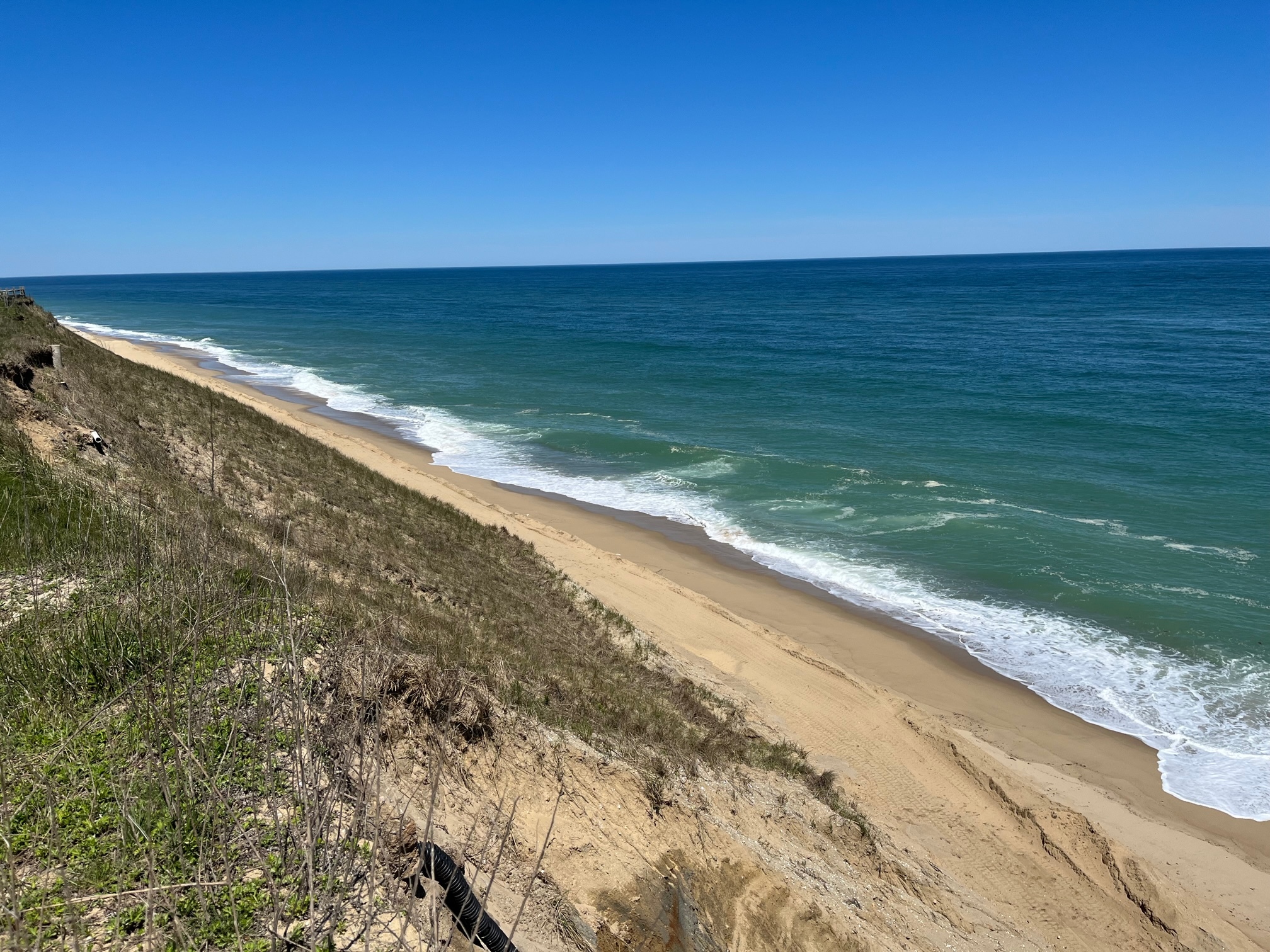
Nantucket is an island located roughly 30 miles off the coast of Massachusetts. It is a popular vacation destination known for its stunning beaches, quaint towns, and historic landmarks. The island is accessible by ferry or plane and offers a unique blend of New England charm, maritime history, and natural beauty. With its cobblestone streets, elegant colonial architecture, and picturesque harbor, Nantucket is a delightful place to explore and relax, making it a favorite among tourists and locals alike. 'Sconset Bluff, situated on the eastern shore of Nantucket, is renowned for its charming houses perched atop the bluff overlooking the Atlantic Ocean, many of which date back to the 19th century. However, erosion is a major issue, and some houses have been relocated or demolished to address this concern.
The listed coordinates will bring you to a scenic overlook at the top of 'Sconset Bluff. This is one of the most active erosional areas on the East Coast due to its exposure to storms from the northeast and its sandy composition and narrow beach. During strong storms, waves crash against the base of the bluff, stealing sand and depositing it off-shore, along the coast, or elsewhere. In addition to this energetic wave action, wind-driven rain causes runoff that erodes the upper bluff and the bluff face. During the past two decades, the bluff averages a loss of 4-5 feet a year. However, a difficult storm season can result in isolated sections of the bluff losing more than 30 feet.
During the winter of 2012-2013, 'Sconset Bluff experienced severe erosion which threatened Baxter Road. As a result, the town of Nantucket took emergency measures. One of the measures taken was planting vegetation on the bluff face. This helps to reduce the susceptibility of the bluff to erosion from wind, rain, and storm-water runoff. One of the more interesting measures taken involves geotextile tubes. Geotextile tubes are made from a high strength woven polypropylene and are filled with sand. At 'Sconset Bluff, three or four rows of 45 foot circumference geotextile tubes, each about 7 feet tall, 19 feet wide, and 100-200 feet long were stacked near the base of 'Sconset Bluff. The geotextile tubes were covered with a thick cover of sand. This sand cover is designed to erode during storm events, in an amount similar to what has historically eroded.
Logging Requirements:
- Estimate the height of the bluff. Why does this area experience significant erosion?
- Based on what you see, do you think vegetation, or geotextile tubes are more effective at preventing erosion?
- Why are the geotextile tubes angled on the northern and southern ends?
- Upload a photo taken at 'Sconset Bluff. You don't have to be in the photo, though it is strongly encouraged.